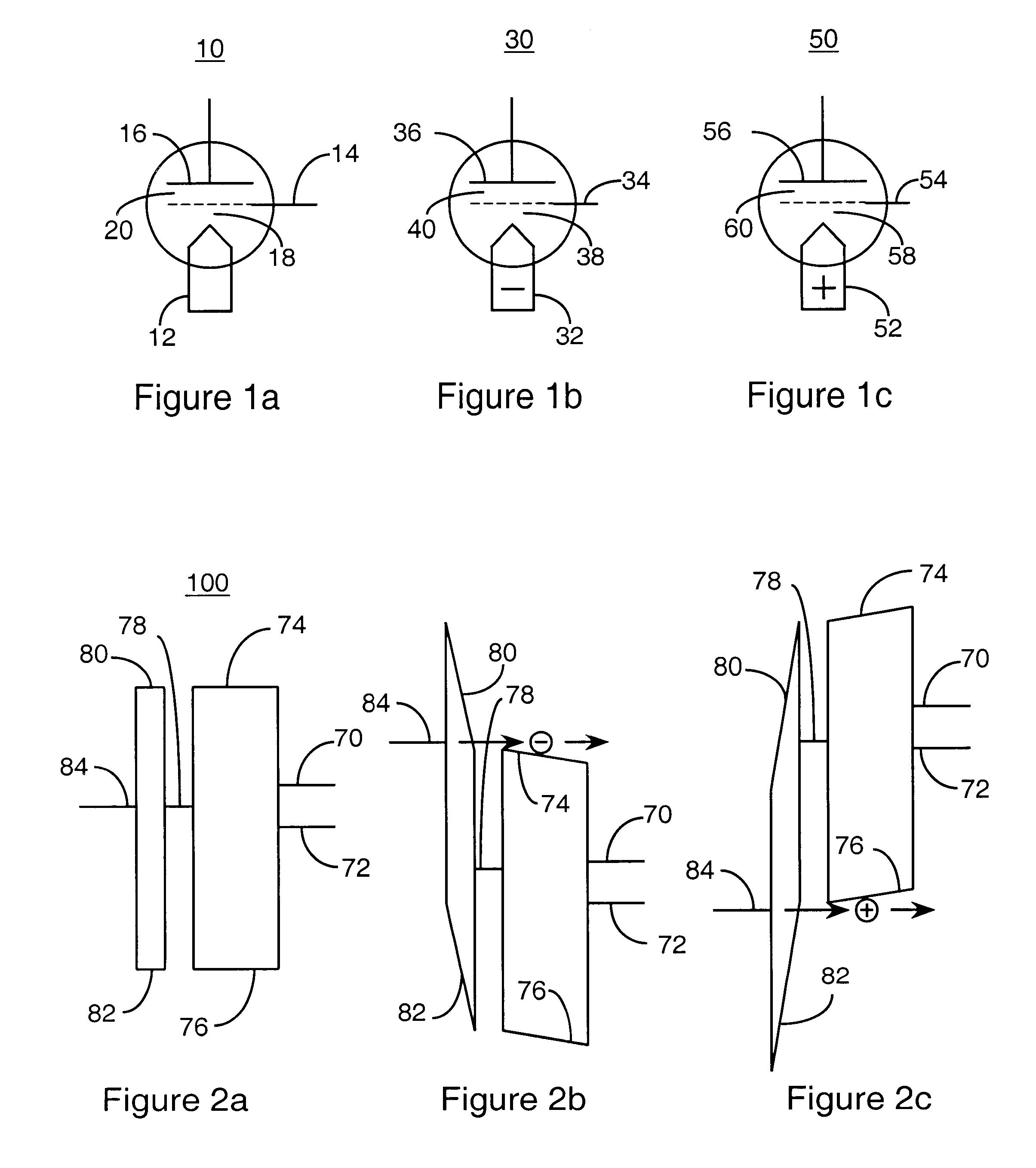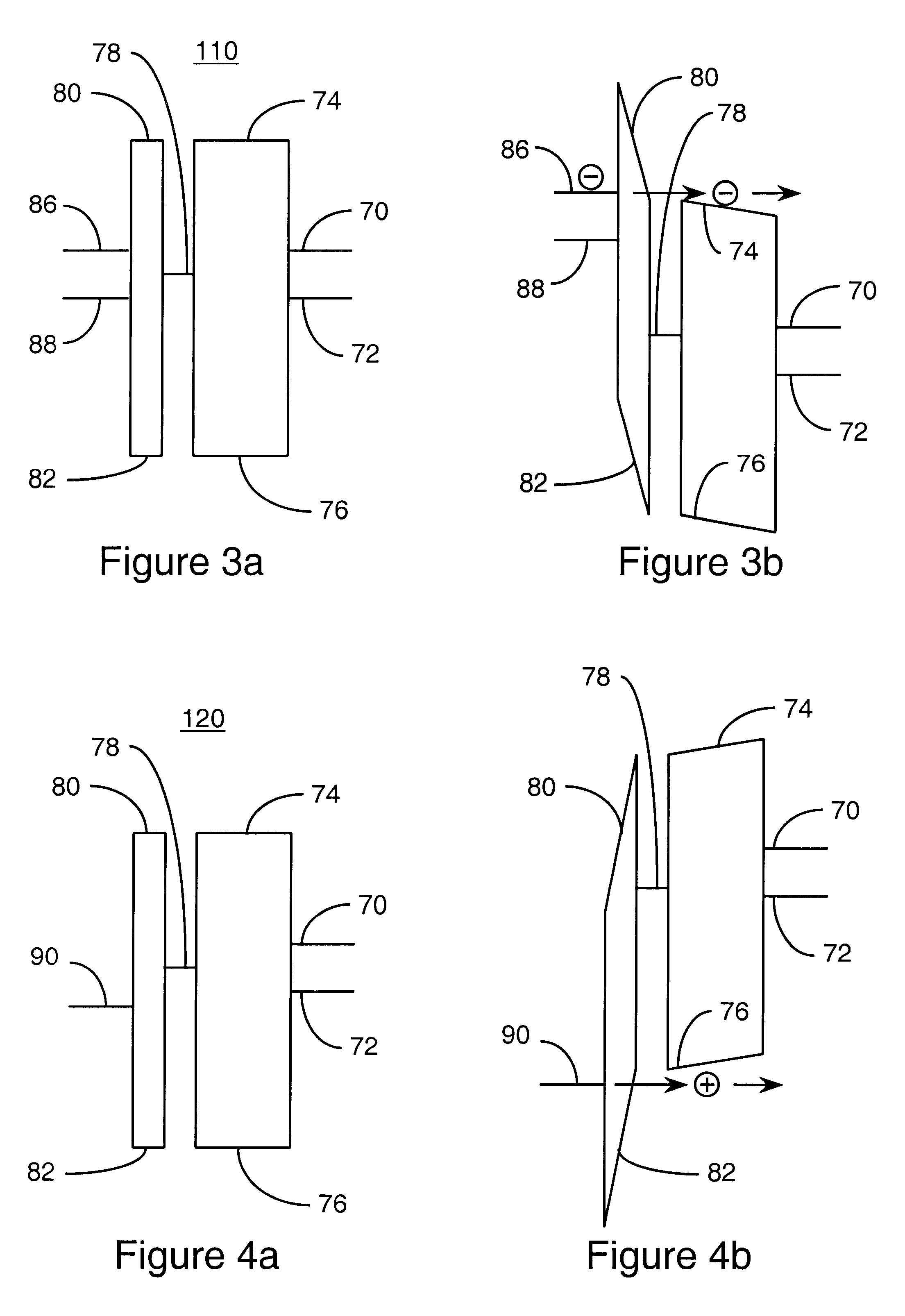Method and apparatus for injecting charge onto the floating gate of a nonvolatile memory cell
a nonvolatile memory cell and floating gate technology, applied in the direction of electrical apparatus, semiconductor devices, transistors, etc., can solve the problems of not being able to scale down to the same degree as the operating voltage of a process under 0.25 .mu.m, and the 5 nm lower bound is not a practical limi
- Summary
- Abstract
- Description
- Claims
- Application Information
AI Technical Summary
Benefits of technology
Problems solved by technology
Method used
Image
Examples
Embodiment Construction
Those of ordinary skill in the art will realize that the following description of the present invention is illustrative only and not in any way limiting. Other embodiments of the invention will readily suggest themselves to such skilled persons having the benefit of this disclosure.
In FIG. 1a, the circuit symbol for a tunneling charge injector 10, according to the present invention, suitable for delivering either electrons or holes to the floating gate of a nonvolatile memory is illustrated. In FIG. 1b, the circuit symbol for a tunneling electron injector 30, according to the present invention, suitable for delivering electrons to the floating gate of a nonvolatile memory is illustrated. In FIG. 1c, the circuit symbol for a tunneling hole injector 50, according to the present invention, suitable for delivering holes to the floating gate of a nonvolatile memory is illustrated. The implementation of the tunneling charge injector 10, tunneling electron injector 30 and tunneling hole in...
PUM
 Login to View More
Login to View More Abstract
Description
Claims
Application Information
 Login to View More
Login to View More - R&D
- Intellectual Property
- Life Sciences
- Materials
- Tech Scout
- Unparalleled Data Quality
- Higher Quality Content
- 60% Fewer Hallucinations
Browse by: Latest US Patents, China's latest patents, Technical Efficacy Thesaurus, Application Domain, Technology Topic, Popular Technical Reports.
© 2025 PatSnap. All rights reserved.Legal|Privacy policy|Modern Slavery Act Transparency Statement|Sitemap|About US| Contact US: help@patsnap.com



